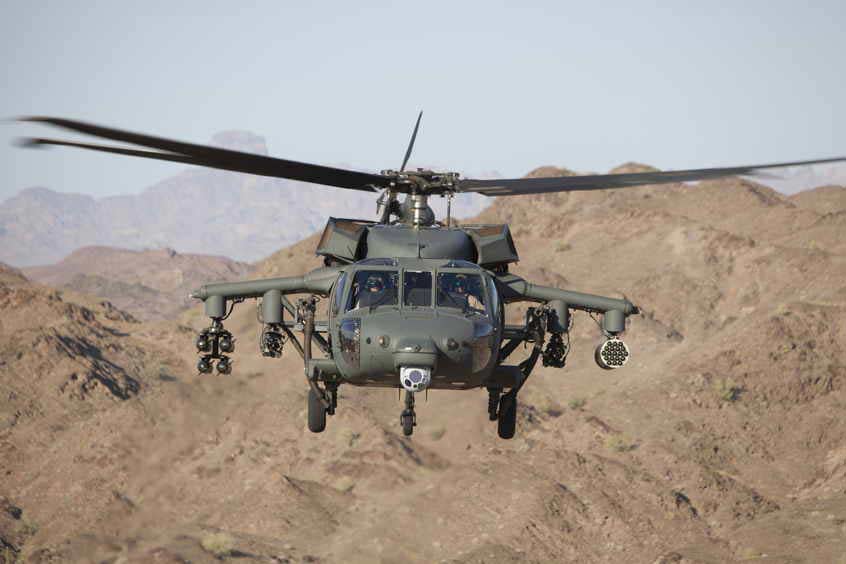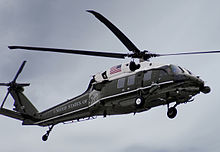The Sikorsky S 70 Helicopter: A Deep Dive into Its Layout and Efficiency
The Sikorsky S 70 Helicopter: A Deep Dive into Its Layout and Efficiency
Blog Article
High-Performance Multi-Role Rotorcraft Featuring Advanced Cabin Technologies and Integrated Sensing Unit Solutions
The realm of rotorcraft technology has seen noteworthy improvements in recent times, specifically in the world of high-performance multi-role rotorcraft furnished with sophisticated cockpit modern technologies and effortlessly incorporated sensor systems. In the following conversation, we will discover the evolution of rotorcraft modern technology, dig into the world of advanced cockpit technologies, and check out the ramifications of incorporated sensor systems on the functional convenience and effectiveness of modern rotorcraft.
Development of Rotorcraft Technology
The development of rotorcraft modern technology has been marked by considerable developments in aerodynamics, products, and propulsion systems, shaping the abilities and efficiency of contemporary rotorcraft. Additionally, innovations in propulsion systems, consisting of extra powerful engines and cutting-edge propulsion technologies, have allowed rotorcraft to attain higher altitudes, faster rates, and better hauls.
These developments have not just changed the capacities of rotorcraft however have additionally broadened their applications throughout different markets, including military, industrial, and emergency situation services. The continual evolution of rotorcraft technology remains to drive technology in the area, pressing the borders of what is feasible and forming the future of vertical flight.
Advanced Cabin Innovations
Structure upon the foundational innovations in aerodynamics, materials, and propulsion systems, the world of rotorcraft modern technology now shifts focus towards pioneering Advanced Cabin Innovations. The integration of advanced innovations within the cockpit setting plays an essential function in enhancing the functional capabilities, security, and efficiency of modern rotorcraft. sikorsky s 70. Advanced Cockpit Innovations encompass a vast selection of functions designed to supply pilots with boosted situational awareness, streamlined information management, and instinctive control interfaces
Among the key innovations in cockpit style is the application of glass cabins, which replace traditional analog assesses with high-resolution displays. These electronic systems supply adjustable designs, real-time data combination, and enhanced readability, enabling pilots to access crucial details at a glimpse. Progressed avionics systems, such as fly-by-wire controls and enhanced reality screens, are transforming exactly how pilots communicate with the aircraft, allowing for specific control and enhanced decision-making capabilities.


Including sophisticated cockpit technologies not just boosts pilot performance yet additionally adds to general objective effectiveness and security in intricate operational settings. By leveraging state-of-the-art modern technologies within the cabin, rotorcraft makers are establishing new requirements for operational excellence and goal success.
Integrated Sensor Equipments
With the development of rotorcraft technology, the integration of sophisticated Integrated Sensor Solution has ended up being critical in improving functional performance and safety. These Integrated Sensing unit Equipments encompass a broad array of modern technologies that supply vital data for various functions such as navigation, surveillance, targeting, and ecological monitoring. By effortlessly incorporating sensing units like radars, electronic cameras, lidar, and infrared systems right into rotorcraft, drivers can benefit from enhanced situational awareness, improved objective abilities, and decreased pilot work.
One key advantage of Integrated Sensing unit Equipments is their capability to collect a fantastic read real-time information and provide workable understandings to pilots and goal operators. Advanced radar systems can identify and track targets over long distances, enabling for very early hazard detection and reliable response planning. Furthermore, integrating infrared and electro-optical electronic cameras makes it possible for rotorcraft to carry out reconnaissance and surveillance objectives with precision and precision.
In essence, the assimilation of advanced sensor modern technologies right into rotorcraft not just boosts operational efficiency but also adds substantially to overall goal success and sites crew safety and security. As rotorcraft remain to develop, the function of Integrated Sensing unit Solution will undoubtedly stay at the leading edge of advancement in the aerospace industry.
Operational Versatility and Effectiveness
Enhancing operational versatility and efficiency in rotorcraft is an all-natural development from the integration of advanced Integrated Sensing unit Solutions. By leveraging the understandings and data provided by these sophisticated sensor systems, rotorcraft can enhance their efficiency throughout different goals and environments.
Functional versatility encompasses the capability of rotorcraft to adjust to different roles and circumstances efficiently. With advanced cockpit technologies and integrated sensor systems, rotorcraft can seamlessly transition in between tasks such as search and rescue, medical emptying, security, and more. This adaptability boosts the rotorcraft's ability to meet varied operational requirements without calling for considerable reconfiguration.
Effectiveness in rotorcraft procedures is critical for making best use of goal efficiency and resource use. Integrated sensor systems play a pivotal duty in enhancing operational efficiency by offering real-time information on weather, surface mapping, target monitoring, and much more. This information enables pilots to make enlightened choices promptly, enhance trip courses, preserve fuel, and enhance total mission performance.
Influence On Modern Aviation Procedures
 Get More Info 70
Get More Info 70"/>
Moreover, the integration of advanced sensing units assists in enhanced objective planning and implementation, making it possible for rotorcraft to carry out a vast array of jobs with enhanced precision. From search and rescue procedures to airborne firefighting and police missions, the abilities of modern rotorcraft equipped with sophisticated cabin modern technologies and integrated sensor systems are unequaled.
Additionally, the influence of these innovations extends beyond operational efficiency to cost-effectiveness and sustainability. By maximizing trip paths, fuel consumption, and maintenance timetables, high-performance rotorcraft outfitted with sophisticated cabin technologies and sensors add to minimizing operational costs and environmental impact, making them important properties in modern aeronautics procedures.
Conclusion
In conclusion, the high-performance multi-role rotorcraft with sophisticated cockpit technologies and integrated sensor systems represents a considerable development in aeronautics innovation. These innovations improve functional versatility and effectiveness, ultimately influencing modern-day air travel procedures in a positive means. The integration of these sophisticated technologies permits enhanced capacities and performance in numerous mission circumstances, showcasing the continued advancement of rotorcraft innovation in the aviation market.
The world of rotorcraft modern technology has actually seen noteworthy improvements in recent times, particularly in the realm of high-performance multi-role rotorcraft geared up with sophisticated cockpit innovations and seamlessly incorporated sensing unit systems. From improved goal versatility to improved functional performance, the merging of innovative cabin technologies and integrated sensing unit systems has actually ushered in a new era of opportunities for rotorcraft applications. In the following discussion, we will certainly discover the evolution of rotorcraft innovation, dig into the world of advanced cabin developments, and take a look at the implications of integrated sensing unit systems on the functional flexibility and efficiency of modern-day rotorcraft.

Report this page